11 Vimeo OTT Alternatives for Video Creators in 2025
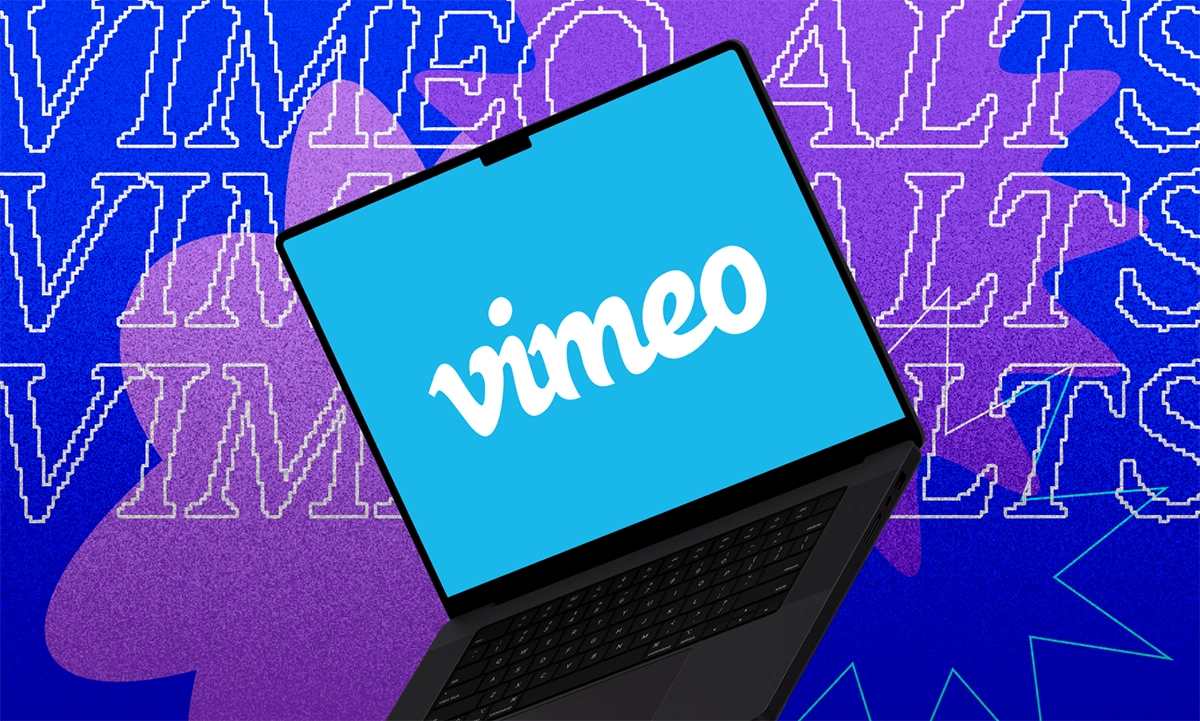
Vimeo OTT (now Vimeo Streaming) has been a trusted name in video hosting and video streaming for years.
The platform has helped creators, businesses, and broadcasters share videos, launch OTT platforms, and monetize with subscription-based or pay-per-view models.
However, as many new and intuitive Over-the-Top platforms enter the landscape, many creators and businesses are realizing that Vimeo may not offer the flexibility, pricing, or eCommerce features they need to scale their video content strategy.
The good news? There’s no shortage of powerful Vimeo alternatives. From platforms built for video monetization and live streaming to those offering advanced customization and white-label OTT apps, these tools help creators and businesses take full control of their content.
In this guide, we’ll break down 11 of the best Vimeo alternative platforms in 2025, exploring what makes each option unique and how they can help you monetize and manage your videos more effectively.
What is Vimeo OTT (Vimeo Streaming)?
Vimeo OTT is a premium video streaming platform designed to help creators, media companies, and businesses launch their own branded video services.
Think Netflix or Hulu, but without the need for complex development or third-party infrastructure.
It's built on Vimeo’s long-standing reputation for high-quality video hosting and combines professional-grade tools with flexible monetization models, making it one of the most well-regarded platforms in the streaming industry.
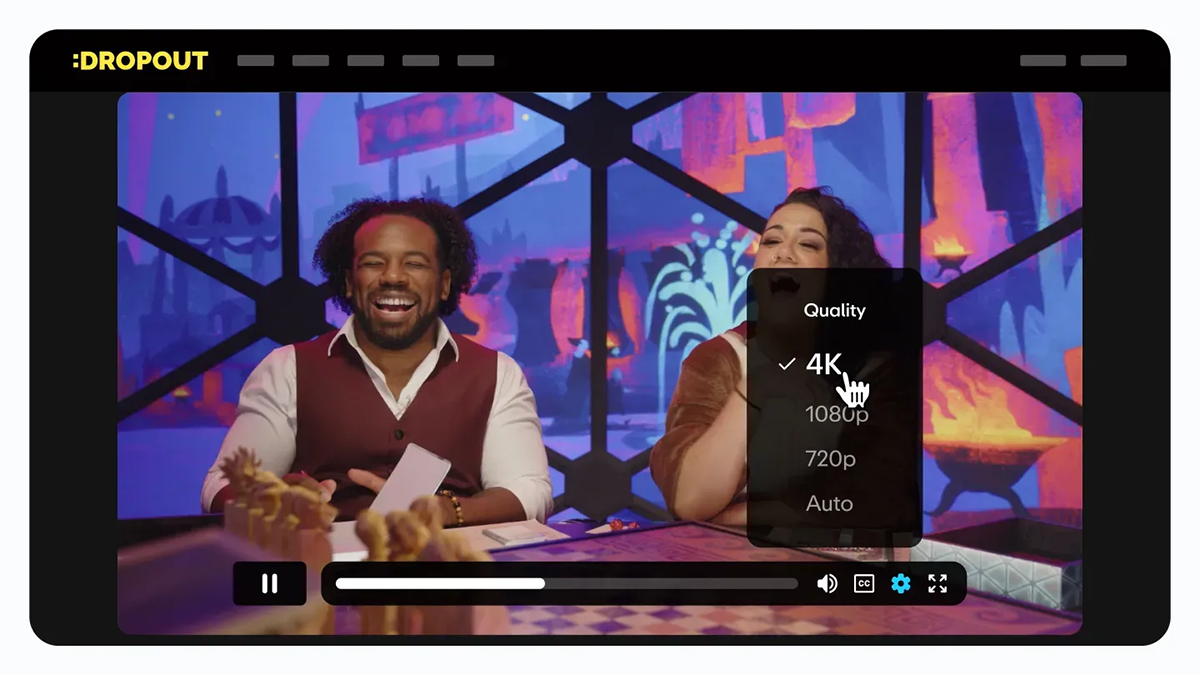
Here's what it offers:
- Crystal-Clear Streaming: Vimeo OTT is known for its stunning video quality. With support for resolutions up to 4K and adaptive bitrate streaming, your viewers enjoy smooth playback, whether they’re on a smart TV, laptop, or mobile device, without buffering ruining the experience.
- Simple Content Management: Organizing your video library is effortless with Vimeo’s built-in content management system (CMS). You can upload videos in bulk, group them into playlists or categories, and create a polished, on-demand catalog that feels like a premium streaming service.
- Flexible Ways to Earn: Whether you want to offer monthly subscriptions (SVOD), one-time purchases (TVOD), or pay-per-view events, Vimeo OTT provides you with the tools to monetize your content in the way that suits you best. You can even mix and match models to see what works best for your audience.
- Live Streaming Made Easy: Want to host a live concert, webinar, or Q&A session? Vimeo OTT includes live streaming tools, allowing you to broadcast events in real-time and keep your audience engaged, then save those streams as VOD content for later viewing.
- Your Brand, Front and Center: Unlike platforms where your brand takes a back seat, Vimeo OTT lets you fully customize the look and feel of your streaming service. Add your own logo, colors, and domain, or even build branded TV apps for iOS, Android, Roku, Fire TV, and Apple TV.
- Insights That Drive Growth: Vimeo’s video analytics help you understand your audience: what they’re watching, how long they stay, and where they drop off. These insights provide the data you need to refine your content strategy and enhance engagement.
- Built-in Marking Tools: From sending out email updates to creating promo codes or special offers, Vimeo OTT's marketing toolkit helps you grow your subscriber base and keep your community coming back for more.
Plugins and Integrations
Vimeo OTT integrates with popular tools like Zapier, Stripe, and Mailchimp, making it easy to manage payments, automate workflows, and launch targeted marketing campaigns. Its API access also allows developers to build custom integrations or expand functionality.
Pricing
Vimeo OTT pricing is usage-based, starting with:
- $1 per subscriber per month, plus transaction fees.
- Merchant fees: 2.5% + $0.30 per subscription transaction (SVOD) and 10% + $0.50 per pay-per-view (TVOD).
- Video uploads: $99 for up to 10 hours of video, $149 for 25 hours, and $199 for 50 hours.
While Vimeo OTT is not the cheapest option on the market, its end-to-end OTT platform, covering hosting, apps, and monetization, justifies the cost for many creators and media companies.
Why Consider a Vimeo Alternative?
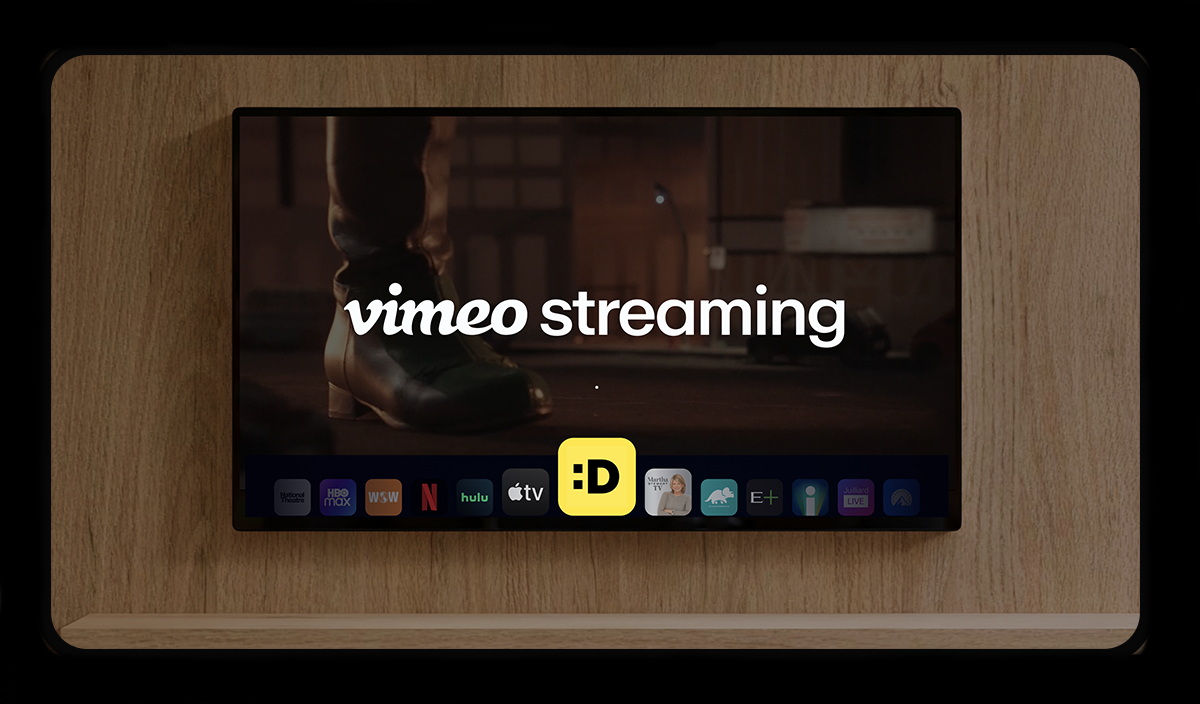
Vimeo has long been recognized as a premium video hosting and streaming solution, but it isn’t always the perfect fit for every creator or business.
While its polished interface and dependable infrastructure are impressive, its pricing structure and feature limitations can become roadblocks, particularly for smaller creators or emerging brands.
Access to advanced features, such as live streaming, branded OTT apps, or robust video monetization models, often requires expensive upgrades or custom enterprise plans. This makes it challenging for those who want to scale without stretching their budgets.
Additionally, Vimeo’s relatively limited eCommerce tools and audience engagement options may fall short for creators seeking to diversify their revenue streams through merchandise sales, memberships, or integrated marketing.
With an increasing number of platforms now offering all-in-one solutions that combine video monetization, advanced analytics, and white-label branding at more competitive prices, it may be time to explore alternatives that offer the flexibility, scalability, and value needed to effectively grow your content strategy.
Top Vimeo OTT (Vimeo Streaming) Alternatives in 2025
1. Fourthwall - Best for Creators Who Want Video & eCommerce
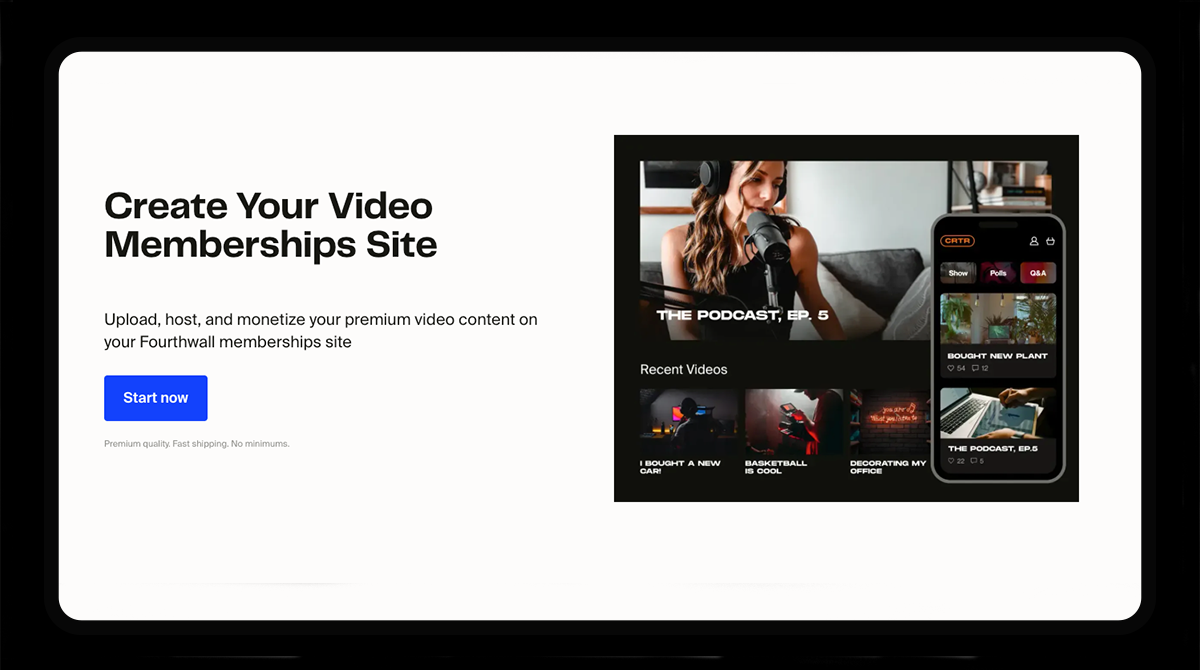
What makes Fourthwall stand out as a Vimeo OTT alternative is its ability to bring video hosting, monetization, memberships, and eCommerce under one roof, without the complexity or cost of building a full OTT platform.
While Vimeo focuses heavily on video playback and OTT features, Fourthwall gives creators the freedom to upload 1080p videos, organize them into collections, and lock them behind paywalls or membership tiers, all on one fully branded, no-code website.
Its membership tools provide video creators the ability to offer exclusive perks, such as bonus videos, Discord access, polls, private RSS feeds, and even members-only merchandise drops.
And with its seamless integrations with platforms like YouTube, TikTok, and Twitch, Fourthwall makes it easy to funnel your existing audience directly to your content and store.
While it doesn’t offer advanced OTT features or white-label TV apps, its ease of use and built-in eCommerce tools make it a powerful choice for solo creators and small teams.
💰 Pricing:
- Free Plan: Free to start; 5% fee on all memberships and digital products sold.
- Fourthwall Pro: $19/month or $180/year with 0% digital product fees, $10 monthly sample credits, a free .store domain, unlimited team members, and priority support.
✅ Pros:
- Fully branded website with no-code customization.
- Video monetization, memberships, and merch sales all in one.
- Built-in email marketing and analytics tools.
- Fan perks like exclusive content and members-only drops.
- Easy integration with social platforms like YouTube, TikTok, and Twitch.
❌ Cons:
- Limited live streaming support.
- Lacks enterprise-level OTT features like custom TV apps.
2. Uscreen - Best All-in-One OTT Solution
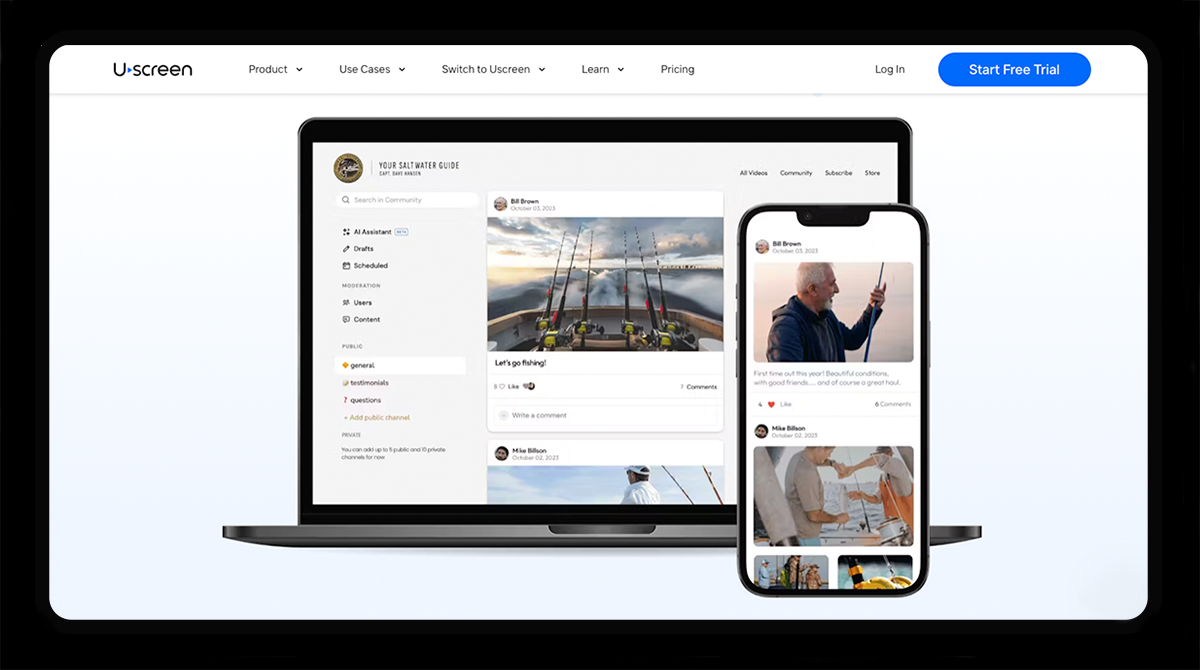
Uscreen is one of the most robust Vimeo OTT alternatives for creators who want a complete streaming and membership platform under their own brand.
It combines video hosting, live streaming, and community-building tools with flexible monetization models, including subscription video on demand (SVOD), pay-per-view (PPV), and transactional video on demand (TVOD).
Unlike Vimeo, which often requires add-ons for advanced features, Uscreen comes with built-in email marketing tools, customizable libraries, and branded apps for mobile and TV, making it easy to manage everything from one dashboard.
The platform also includes detailed analytics to help you understand viewer behavior and optimize your content strategy for growth.
With features like community spaces, customizable video catalogs, and in-app purchases, Uscreen helps creators not just stream content but build a sustainable business around it.
While its pricing starts at $199/month, which can be high for smaller creators, its all-in-one approach and enterprise-level tools make it a strong choice for anyone serious about scaling their video content and monetization strategy.
💰 Pricing: Starts at $199/month.
✅ Pros:
- Comprehensive video hosting and live streaming features.
- Multiple monetization options (SVOD, TVOD, PPV).
- Branded mobile and TV apps included.
- Detailed analytics and performance tracking.
❌ Cons:
- Higher starting cost compared to creator-focused platforms.
- Limited ability to embed videos on third-party sites.
3. Dacast - Best for Live Streaming & Pay-Per-View Events
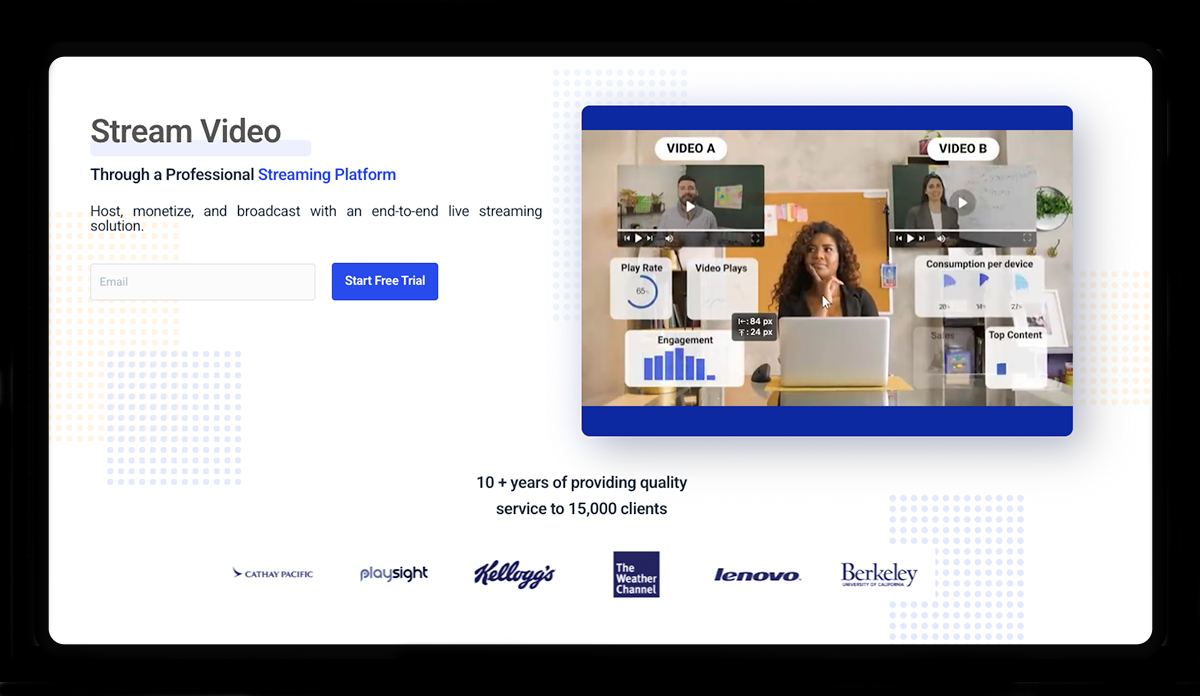
Whether you’re hosting sports events, virtual conferences, concerts, or educational webinars, Dacast makes it easy to broadcast in real-time and offer replays or on-demand access to your audience.
One of Dacast’s standout features is its built-in paywall, which supports pay-per-view (PPV), subscription video on demand (SVOD), and ad-supported video on demand (AVOD) models, giving you full control over how you monetize your video content.
It also integrates seamlessly with platforms like Zoom, making it ideal for hybrid events, large-scale webinars, and corporate streaming needs.
With real-time analytics, a fully customizable video player, and API access for developers, Dacast offers a level of flexibility and performance that rivals Vimeo OTT.
While its feature set is robust, Dacast’s interface can feel less beginner-friendly compared to creator-first platforms, and its lack of built-in DRM protection may be a drawback for high-value or sensitive content.
However, for professional-grade live streaming and events, Dacast remains one of the top alternatives to Vimeo OTT.
💰 Pricing:
- Starter: $39/month (billed annually).
- Event: $63/month.
- Scale: $165/month.
- Custom: Contact sales for enterprise solutions.
✅ Pros:
- Excellent live streaming capabilities with global CDN coverage.
- Built-in paywall for PPV, subscriptions, and ad-based monetization.
- White-label video player with full branding control.
- Real-time video analytics and API-driven integrations.
- Reliable Zoom integration for hybrid events and webinars.
❌ Cons:
- Steeper learning curve for new users.
- No built-in DRM protection for premium content.
- Bandwidth and storage limits on certain plans.
4. YouTube - Best Free Alternative with Massive Reach
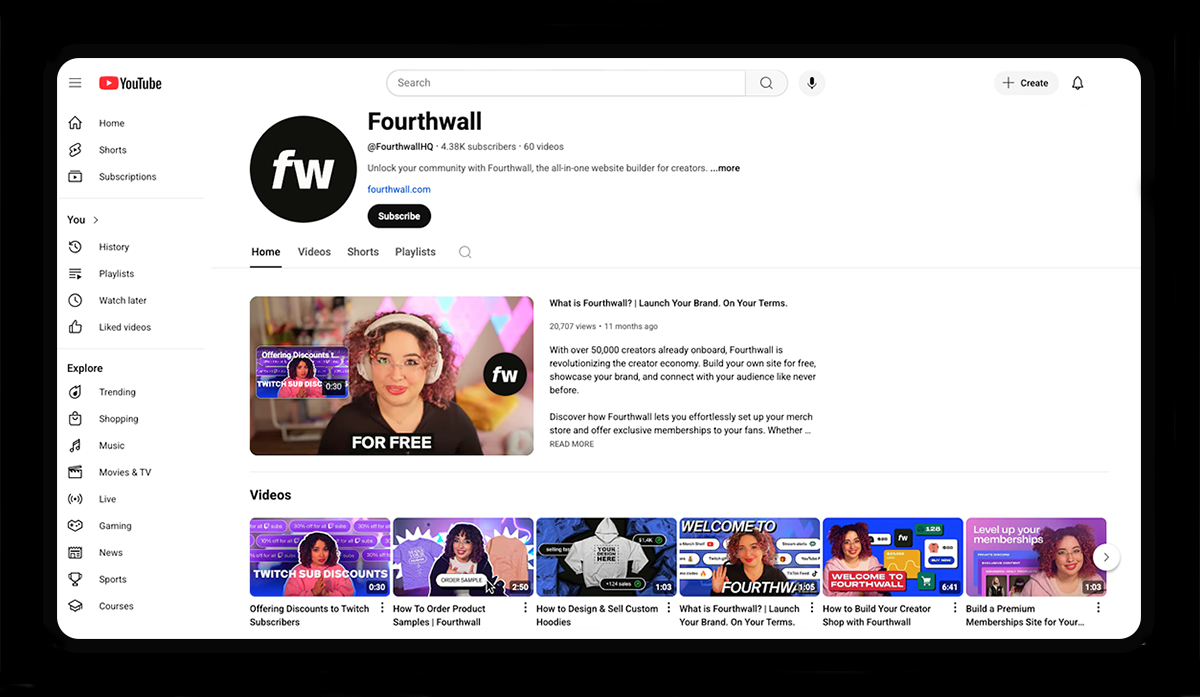
YouTube remains the go-to platform for creators seeking free video hosting, massive audience reach, and built-in monetization tools, all without incurring monthly subscription fees.
As the world’s largest video-sharing platform, it offers powerful revenue streams through AdSense (AVOD), channel memberships, Super Chats, Super Thanks, and YouTube Shopping, which enables creators to sell merchandise or products.
Whether you’re uploading long-form content, experimenting with YouTube Shorts, or hosting live streaming events, the platform makes it easy to diversify your content strategy while tapping into a global audience of billions.
YouTube also excels in discoverability; its algorithm, combined with SEO-friendly tools, can quickly push your content to new viewers faster than most white-label OTT platforms, such as Vimeo OTT.
Plus, integrations with platforms such as Fourthwall, Shopify, and Patreon allow creators to funnel their audience toward exclusive content or merchandise sales.
While the trade-off is limited branding control and revenue sharing, YouTube’s limitless scalability and robust analytics through YouTube Studio make it one of the most accessible alternatives for both new and seasoned creators.
💰 Pricing: Free to use (YouTube takes a cut of ad and fan-generated revenue).
✅ Pros:
- Free video hosting, streaming, and live events.
- Global reach with algorithm-driven discoverability.
- Multiple monetization options: ads, memberships, Super Chats, merch, and more.
- Strong analytics via YouTube Studio.
- Seamless integrations with Shopify, Fourthwall, and Patreon.
❌ Cons:
- Limited branding and customization compared to white-label OTT platforms.
- Revenue is shared with YouTube; ad rates fluctuate.
- Strict content policies and algorithm changes can impact monetization.
5. Castr – Best for Full Control Over Streaming and Monetization
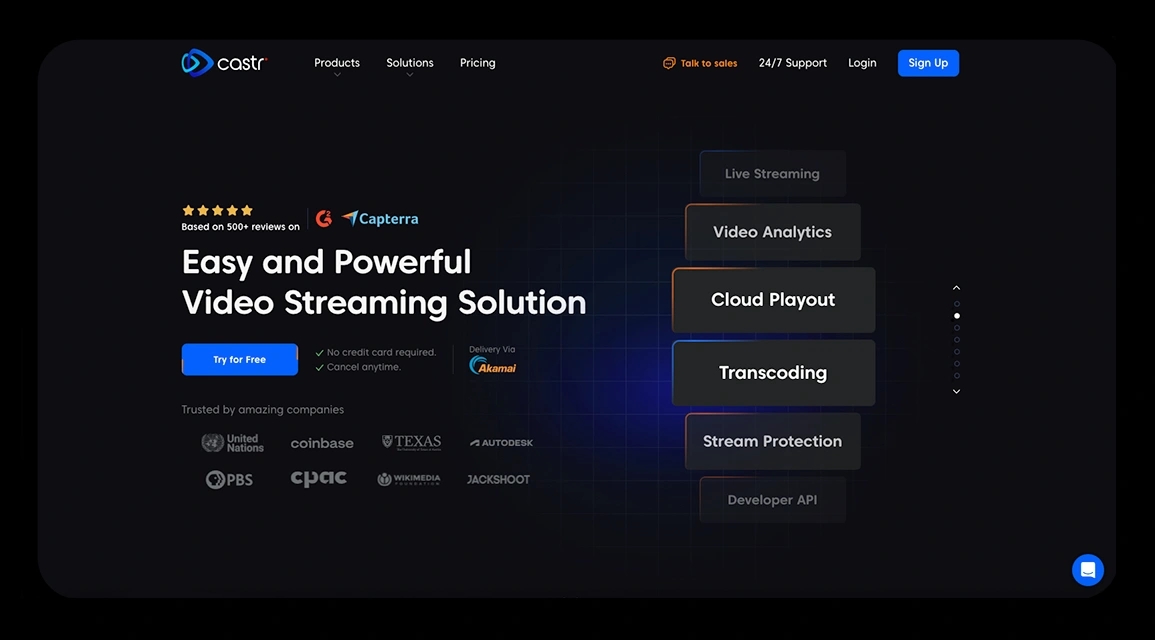
Castr isn’t just a livestreaming tool; it’s a full-fledged broadcasting hub built for creators, indie studios, churches, educators, and anyone who wants to share video content without being limited by budget or overly complex setups.
From multistreaming and cloud recording to TV-style playout and paywall monetization, Castr covers the full spectrum of video production and delivery, without forcing you to string together half a dozen different services.
What sets Castr apart is how it bridges the gap between simplicity and scale. You can start with the basics, going live on YouTube and Twitch at the same time, and gradually expand into advanced workflows like scheduled 24/7 channels, VOD libraries with branded players, and even white-label OTT apps.
Features like adaptive bitrate streaming, ultra-low latency via WebRTC, and secure video delivery via multi-CDN ensure your streams are reliable, high-quality, and globally accessible.
You don’t need to be a tech expert or part of a large media team to unlock these tools. Castr is built for everyday creators with big ideas, offering a clean UI, robust analytics, and flexible pricing that grows with your channel or business.
💰 Pricing: Starts at $12.50/month for basic multistreaming and scales up to $250/month for advanced features like adaptive bitrate, custom transcoders, OTT-ready HLS URLs, peer-to-peer CDN, and dedicated support.
✅ Pros:
- A true all-in-one platform for live, VOD, paywalled content, and OTT apps.
- Global delivery backed by a multi-CDN infrastructure for smooth streaming everywhere.
- Ultra-low latency WebRTC for real-time engagement and interaction.
- Built-in monetization options like subscriptions and pay-per-view with branded checkout.
- API-first approach for full customization, automation, and developer control.
❌ Cons:
- Lower-tier plans come with trade-offs: limited storage, stream retention, and feature access.
- Scheduling controls aren’t minute-specific, which can be a pain for tightly timed events.
- Their paywall system lacks flexibility with auto-generated passwords and no list import/export.
6. VPlayed - Best for Complete Platform Ownership
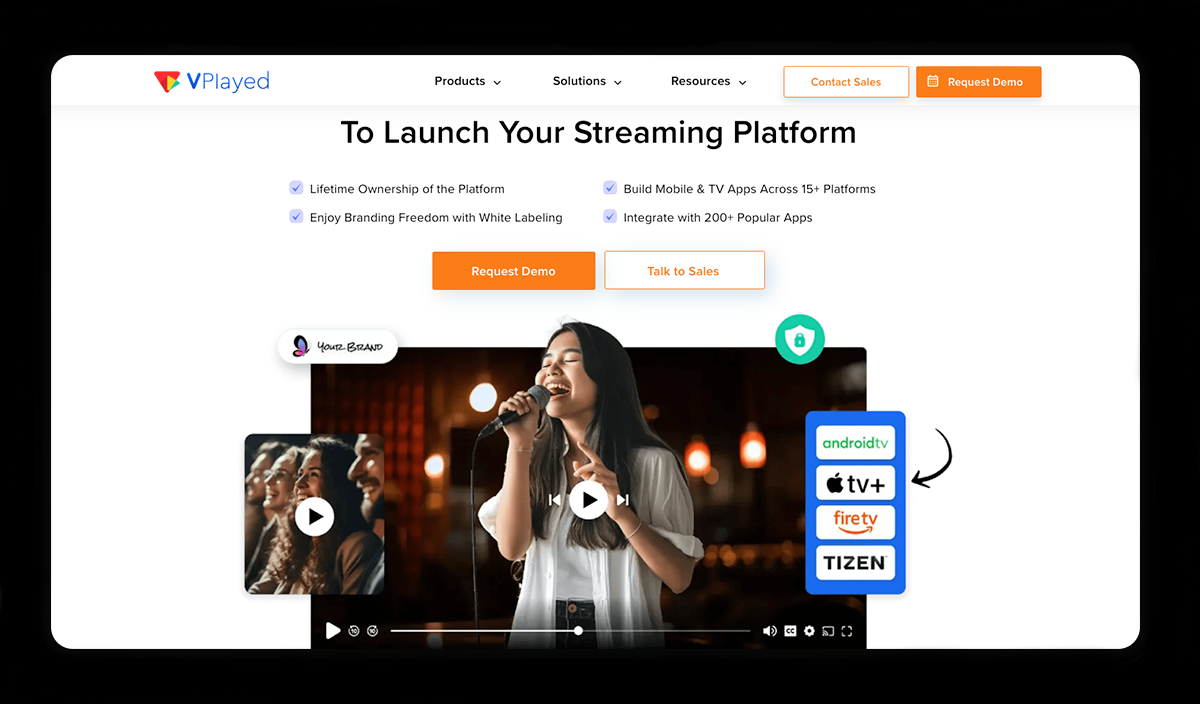
Unlike SaaS-based platforms that lock you into monthly fees and revenue-sharing models, VPlayed operates on a one-time licensing fee, granting lifetime platform ownership with zero commissions.
This makes it especially attractive for brands seeking scalability and independence.
With VPlayed, you get complete customization—from the frontend design to backend features—ensuring your streaming platform reflects your brand’s unique identity.
It supports all major monetization models (SVOD, TVOD, AVOD, PPV, and hybrid approaches), giving you the flexibility to generate revenue in multiple ways.
On the technical side, VPlayed offers 4K video playback, multi-DRM protection, adaptive bitrate streaming, and custom OTT apps for 15+ platforms, including Apple TV, Roku, and Fire TV.
While its higher upfront cost and setup complexity may seem daunting, the long-term value and freedom it provides far outweigh the recurring expenses associated with traditional platforms like Vimeo OTT or Uscreen.
💰 Pricing: Custom; One-time licensing fee (contact VPlayed for a quote).
✅ Pros:
- Full platform ownership with zero revenue sharing.
- 100% white-label solution with complete UI/UX control.
- Robust video CMS with advanced analytics and marketing tools.
- OTT apps for web, mobile, and 15+ smart TV platforms.
- Industry-grade security with AES-256 encryption, DRM, and geo-blocking.
❌ Cons:
- Higher initial cost compared to SaaS platforms.
- Requires technical expertise or a development team for setup.
- Longer deployment timeline versus plug-and-play alternatives.
7. Kaltura - Best for Enterprise & Educational Content
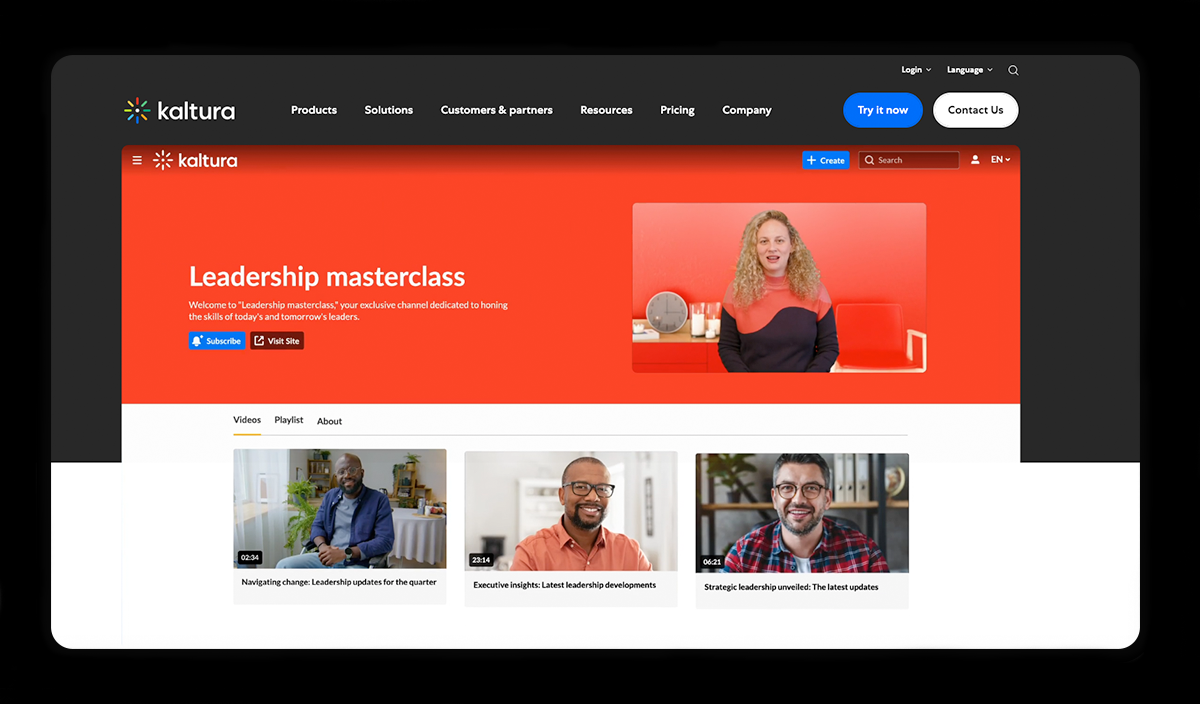
Designed with enterprises, universities, and professional organizations in mind, Kaltura offers a fully customizable, API-driven video platform that’s built to handle complex video needs.
Unlike Vimeo, which focuses on straightforward OTT streaming, Kaltura is designed to integrate seamlessly with CRMs, LMS systems, and collaboration tools like Zoom or Microsoft Teams.
This makes it ideal for e-learning, employee onboarding, and corporate training, as well as organizations that need robust security, accessibility features, and advanced video analytics to track engagement and performance.
With cloud-based hosting, adaptive bitrate streaming, and interactive video elements such as digital whiteboards, in-video quizzes, and chat tools, Kaltura transforms video into an active and engaging experience for audiences.
💰 Pricing: Custom, based on usage and features. Pay-as-you-go options and credits are available for features, bandwidth, and storage.
✅ Pros:
- Fully customizable platform with open-source flexibility.
- Interactive video tools for online education and training (quizzes, whiteboards, shared notes).
- Seamless integrations with LMS, CRMs, and enterprise software.
- High-level security and DRM features for premium content protection.
- Advanced analytics to measure engagement, performance, and ROI.
❌ Cons:
- Steeper learning curve due to complex features and integrations.
- Higher pricing for enterprise-level features.
- Not ideal for beginners or small creators who need a plug-and-play solution.
8. Muvi - Best for Netflix-Style Streaming
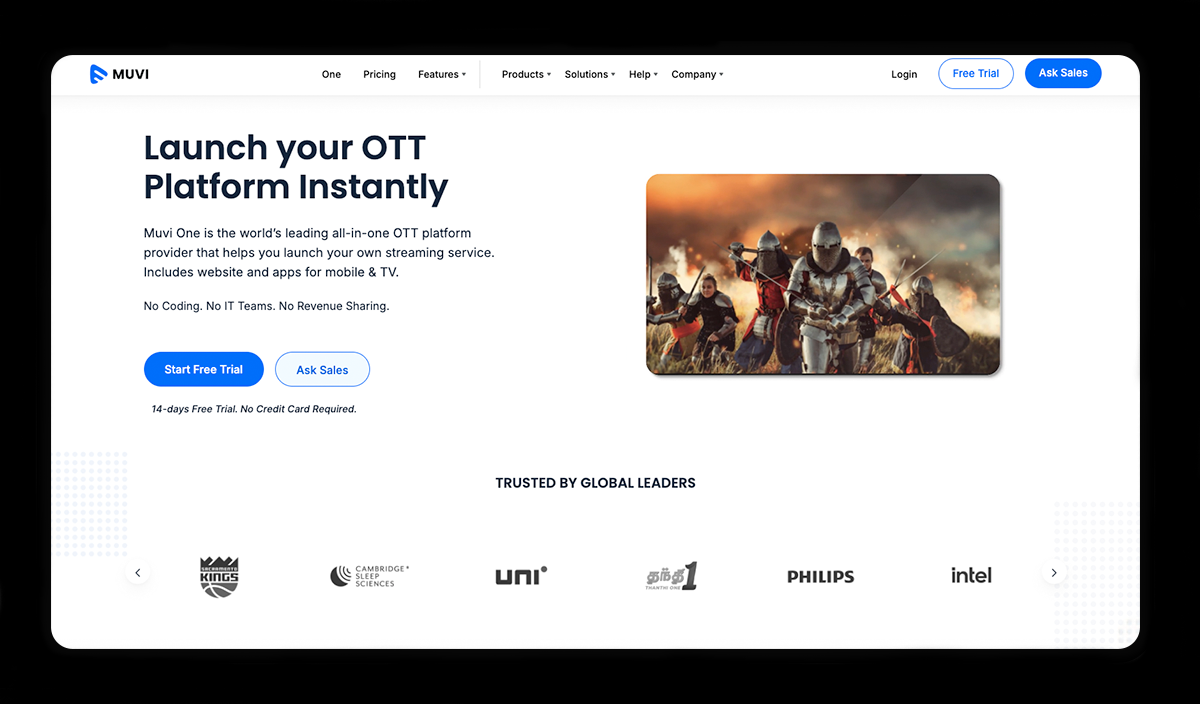
Muvi is a fully managed OTT platform designed for businesses, media companies, and serious content creators who want a white-label solution that covers everything—from VOD and live streaming to podcasts and short-form content.
With apps for smart TVs, gaming consoles, mobile devices, and web browsers, Muvi allows you to distribute content across virtually every screen your audience uses.
What sets Muvi apart from Vimeo is its enterprise-grade flexibility and monetization options.
You can choose from SVOD, TVOD, AVOD, pay-per-view, or hybrid models, all built into a platform that also supports DRM protection, watermarking, and geo-blocking to secure your content.
Its AI-powered recommendation engine gives your viewers a personalized experience, while its robust analytics and built-in CDN ensure fast, high-quality streaming anywhere in the world.
Although its starting price of $399/month puts it in the premium category, Muvi is a feature-rich alternative for creators and enterprises looking to operate on a larger scale.
💰 Pricing: Starts at $399/month (Standard Plan). Professional and Enterprise tiers are available for advanced features, custom hosting, and higher streaming capacity.
✅ Pros:
- Supports all major monetization models (SVOD, TVOD, AVOD, PPV).
- Native apps for web, mobile, and smart TVs (Apple TV, Roku, Fire TV, etc.).
- Enterprise-grade video security with DRM, watermarking, and geo-blocking.
- AI-powered content recommendations to boost viewer engagement.
- Scalable infrastructure and global CDN for high-demand streaming.
❌ Cons:
- High cost makes it less accessible for solo creators or small businesses.
- A more complex setup process compared to plug-and-play platforms like Fourthwall.
- The CMS interface can be overwhelming for beginners.
9. Brightcove - Best for Large-Scale Video Monetization
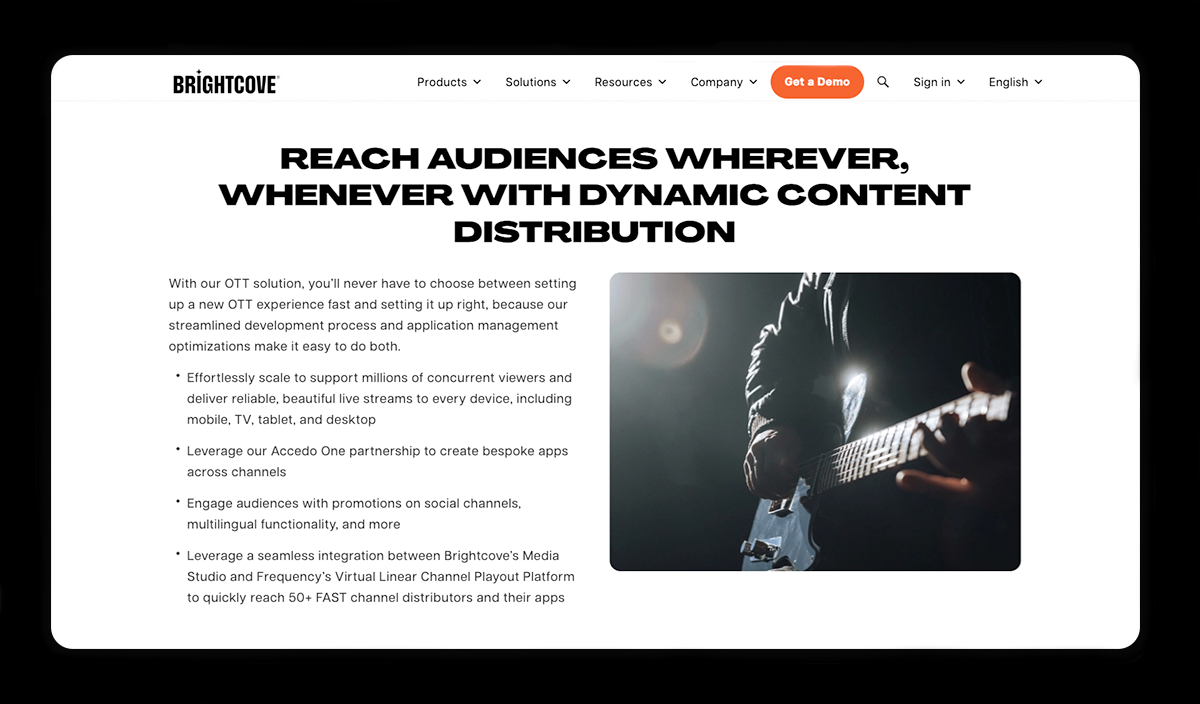
If you’re managing a high-volume video strategy and need a platform that’s built to handle enterprise-level demands, Brightcove is one of the strongest alternatives to Vimeo OTT.
Trusted by major media companies and global brands, Brightcove combines broadcast-grade streaming quality, robust monetization tools, and powerful analytics to help you scale both audience reach and revenue.
From server-side ad insertion (SSAI) to hybrid monetization models like AVOD, SVOD, and TVOD, Brightcove is designed to provide content owners with complete flexibility in generating income from their video libraries.
What sets Brightcove apart from Vimeo is its deep customization options and enterprise integrations.
Not only can you fully customize the video player to match your brand identity, but Brightcove also integrates with CRM tools like HubSpot and Salesforce, marketing platforms, and Google Analytics, providing a comprehensive view of your audience and business performance.
Add in enterprise-grade DRM protection, geo-blocking, and adaptive bitrate streaming, and it’s clear that Brightcove is built for companies that need high-end scalability and security.
💰 Pricing: Custom (contact Brightcove sales for a tailored quote).
✅ Pros:
- Broadcast-grade streaming with Emmy Award-winning infrastructure.
- Robust monetization options, including SSAI and hybrid AVOD/SVOD/TVOD models.
- Enterprise-grade analytics for in-depth audience and performance tracking.
- White-label customization for video players and OTT apps.
- Integrates with marketing and CRM tools like Salesforce, HubSpot, and Google Analytics.
❌ Cons:
- High cost makes it better suited for enterprises than for independent creators.
- Complex setups and features require technical expertise or larger teams.
10. Wowza - Best for Low-Latency Live Streaming
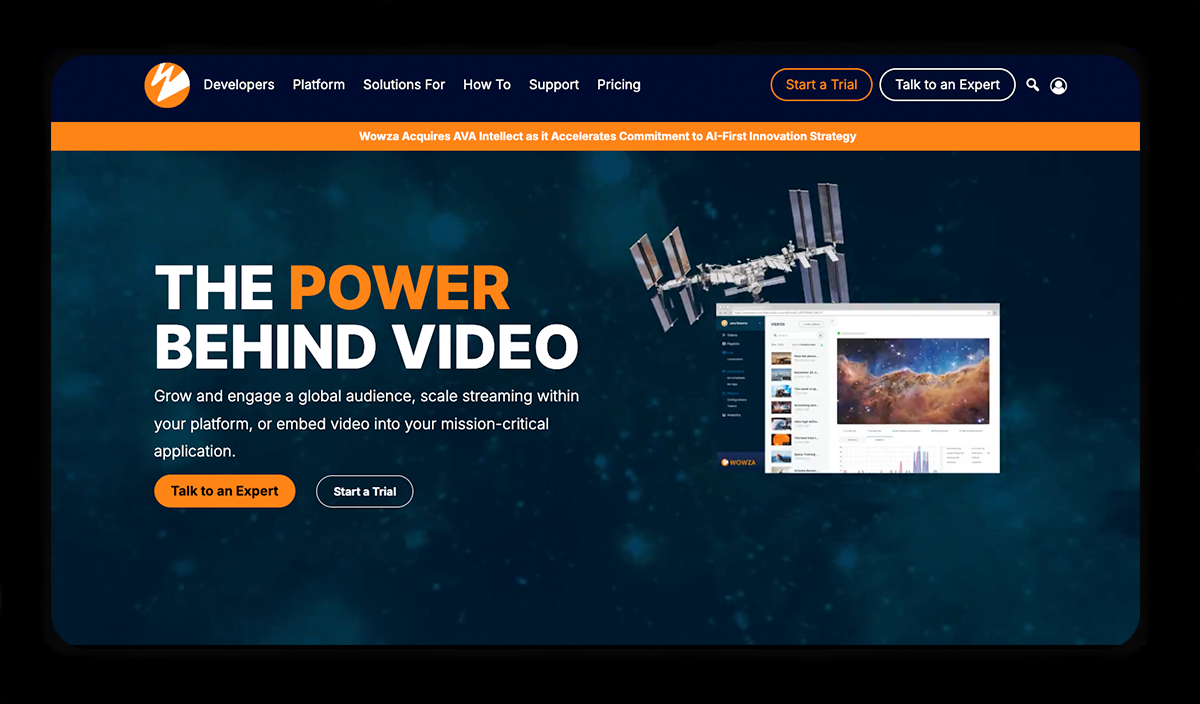
Trusted by broadcasters, sports organizations, and enterprise teams, Wowza is engineered for low-latency HLS and adaptive bitrate streaming, ensuring your audience experiences smooth, high-quality playback across all devices, even under high traffic conditions.
Whether you’re hosting virtual conferences, streaming live sports, or running large-scale interactive broadcasts, Wowza’s infrastructure is designed to handle mission-critical video delivery with exceptional reliability.
What sets it apart from Vimeo is its technical flexibility and robust developer toolkit. With advanced APIs, customizable plugins, CSS skinning, and SecureToken playback protection, you can build fully tailored streaming workflows that integrate seamlessly with your existing tech stack.
Wowza also supports immersive formats, such as 360° video, closed captions (SCTE standards), and interactive features, making it a versatile solution for companies that demand more than basic video hosting.
While its learning curve and limited built-in monetization features may be challenging for solo creators, Wowza shines for businesses and organizations that require scalable, secure, and real-time streaming at a global level.
💰 Pricing: Starts at $25/month for Wowza Streaming Cloud; custom enterprise pricing available.
✅ Pros:
- Ultra-low latency live streaming with adaptive bitrate technology.
- Advanced APIs and developer tools for custom workflows.
- Multi-device compatibility, including mobile, desktop, and OTT apps.
- Supports 360° video and interactive content formats.
- Real-time analytics for instant viewer insights.
❌ Cons:
- Not as user-friendly for beginners or non-technical users.
- Monetization features are limited compared to platforms like Uscreen or Fourthwall.
11. JWP Connatix – Best for Fast, Intelligent, and Ad-Optimized Video Streaming
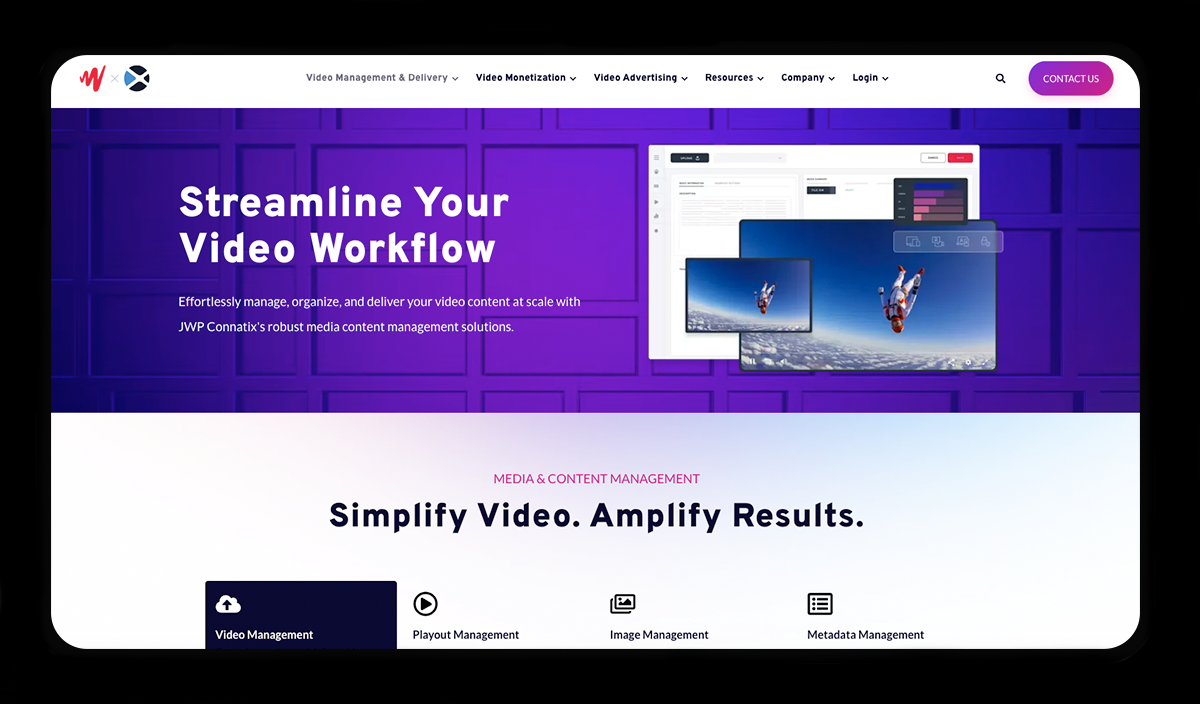
JWP Connatix (formerly JW Player) has leveled up from its early days, powering YouTube’s first player to become a creator-friendly platform built for speed, flexibility, and ad-driven monetization.
It’s perfect for those who want to stream high-quality video (live or on-demand) without the lag, thanks to its adaptive bitrate streaming that delivers smooth playback up to 4K on any device.
What really sets it apart is its ad-first approach, featuring seamless server-side ad insertion (SSAI) and smart tools like “Watch Next” recommendations, which keep viewers engaged while boosting your revenue.
With an easy-to-embed HTML5 player, API customization, and detailed analytics, JWP Connatix feels like the next-gen solution for creators who want to scale without getting lost in clunky workflows.
💰 Pricing: Custom (based on features, impressions, and usage).
✅ Pros:
- Ultra-fast HTML5 video player optimized for web, mobile, and OTT.
- Flexible monetization via SSAI and ad network integrations.
- Intelligent recommendations (Article Matching and Watch Next).
- Advanced analytics with audience engagement insights.
- API-based customization for player look and functionality.
❌ Cons:
- Live streaming is only available on advanced plans.
- Primarily ad-focused (lacks subscription-based monetization models like SVOD).
- No built-in CDN for China delivery.
What to Look for in a Vimeo Alternative
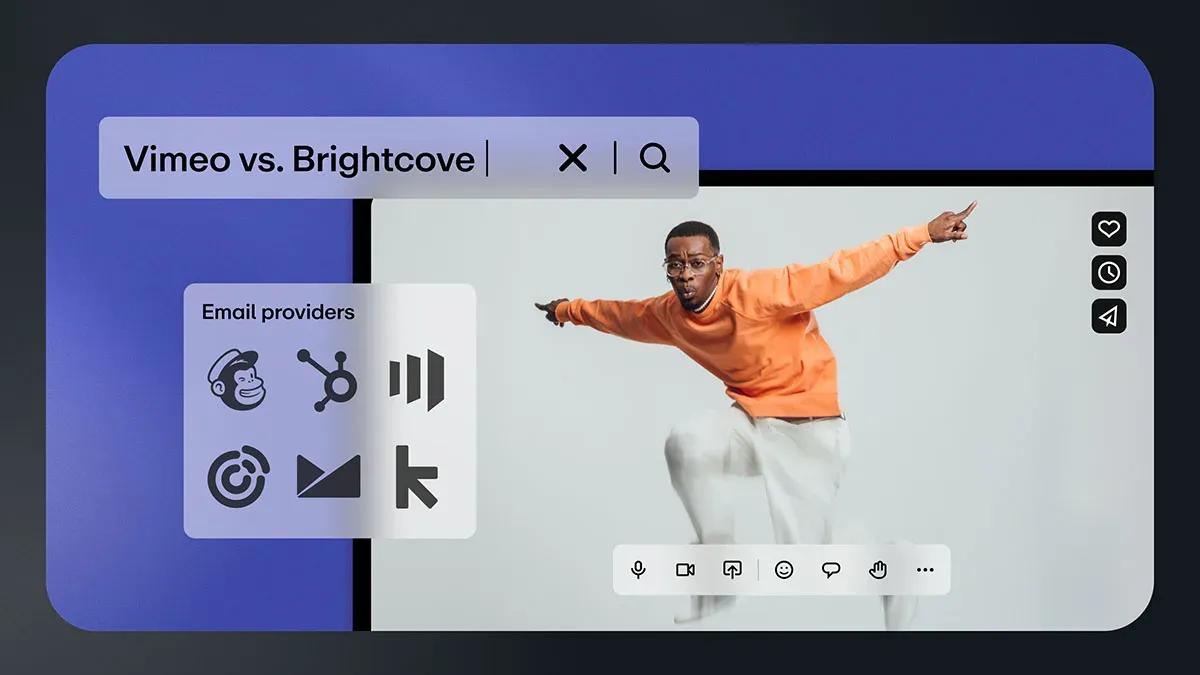
As you can tell from the list above, not all video streaming platforms are created equal.
Finding the right Vimeo alternative ultimately depends on your content strategy, target audience, and monetization goals.
Whether you’re a solo creator, a growing business, or an established media company, the ideal platform should not only handle your video hosting needs but also help you scale and engage your viewers with ease.
Here are the key factors to keep in mind when evaluating your options:
Flexible Pricing and Scalability
Look for platforms that grow with your business rather than locking you into steep monthly or annual costs.
Many Vimeo alternatives offer tiered pricing or pay-as-you-grow plans, making it easier to start small and scale as your audience and content library expand.
Multiple Monetization Models
Your platform should give you full control over how you monetize video content.
From subscriptions (SVOD) and advertising (AVOD) to transactional video on demand (TVOD) and pay-per-view (PPV) events, having diverse monetization options ensures you can experiment with different revenue streams and find the model that works best for your audience.
Branding and Customization
A white-label platform is crucial if you want to build a streaming service under your own brand.
Features like customizable video players, branded OTT apps, and domain control help you create a professional, on-brand experience—something Vimeo’s standard templates can’t always offer.
Content Management and Analytics
A powerful video content management system (CMS) can significantly impact your workflow.
Seek platforms that let you organize, categorize, and schedule your content with ease while offering real-time video analytics, viewer insights, and DRM protection to keep your content secure and valuable.
User Experience and Support
Your backend tools should be as smooth as your content delivery.
Look for platforms with intuitive dashboards, fast uploads, adaptive bitrate streaming, and responsive customer support to ensure minimal downtime and a frustration-free experience for both you and your viewers.
Ready to Take Control of Your Video Business?
While there are plenty of Vimeo alternatives that specialize in OTT streaming, live events, or enterprise video solutions, few platforms give creators as much freedom and flexibility as Fourthwall.
Unlike traditional streaming platforms that focus solely on video hosting, Fourthwall merges video monetization, fan memberships, and eCommerce into one seamless, creator-first experience.
With Fourthwall, you’re not just uploading videos; you’re building a fully branded platform that feels like your corner of the internet. You can:
- Upload and organize premium video content (up to 1080p) behind paywalls or custom membership tiers.
- Create recurring revenue through memberships with perks like exclusive videos, polls, Discord access, and more.
- Sell merch and digital products directly alongside your content without relying on third-party storefronts.
- Analyze audience behavior with built-in analytics to refine and grow your business.
- Integrate with YouTube, TikTok, and Twitch, funneling your fans from social platforms straight into your ecosystem.
Whether you’re sharing tutorials, behind-the-scenes content, or exclusive episodes, Fourthwall gives you the tools to own your brand, monetize on your terms, and scale your community—all without juggling multiple services or paying for expensive OTT add-ons.
Join today and start building a platform that not only showcases your content but turns your audience into a thriving, loyal community.
FAQ: Vimeo Alternatives
What is the best alternative to Vimeo OTT for creators?
The best Vimeo OTT alternative for creators depends on your needs, but Fourthwall stands out for its all-in-one approach.
It combines video hosting, memberships, and eCommerce into one fully branded platform, allowing creators to monetize videos, sell merch, and build fan communities without juggling multiple services.
Which video platform offers the most monetization options?
Platforms like Uscreen and VPlayed lead the pack in terms of monetization, offering SVOD, TVOD, AVOD, pay-per-view, and hybrid models.
For creators seeking simplicity with powerful revenue features, Fourthwall is also a great choice, offering video paywalls, memberships with tiered perks, and integrated merchandise sales.
Is Vimeo OTT worth it compared to other streaming platforms?
Vimeo OTT is a strong platform for branded streaming, but it can be expensive and lacks some advanced eCommerce tools.
Many creators are switching to alternatives like Fourthwall or Uscreen for better pricing, more flexible monetization, and features like merchandise integration and community building.
Are there video hosts that combine streaming with membership or OTT features?
Yes, several video hosting platforms now combine live streaming and membership tools to help creators monetize their content more effectively.
Platforms like Uscreen, Muvi, and Dacast go beyond basic video streaming by offering OTT (over-the-top) features, such as paywalls, subscription tiers, and branded video players that can be embedded directly on your site.
These options are great Vimeo alternatives for creators who want full control over their video-on-demand (VOD) libraries and audience access.
















